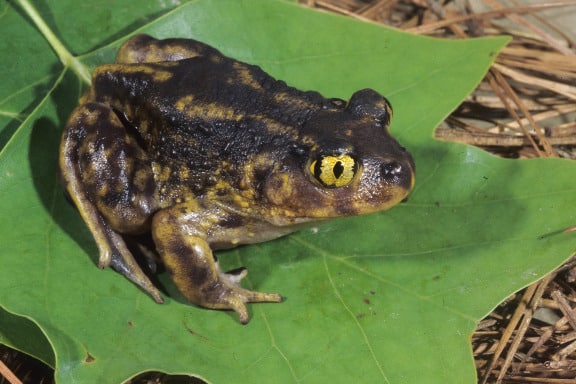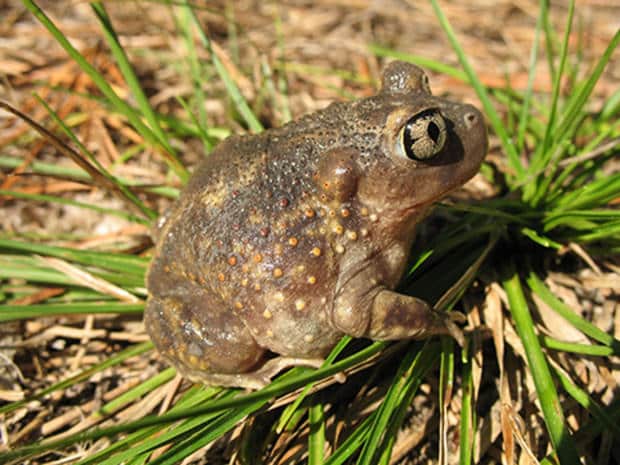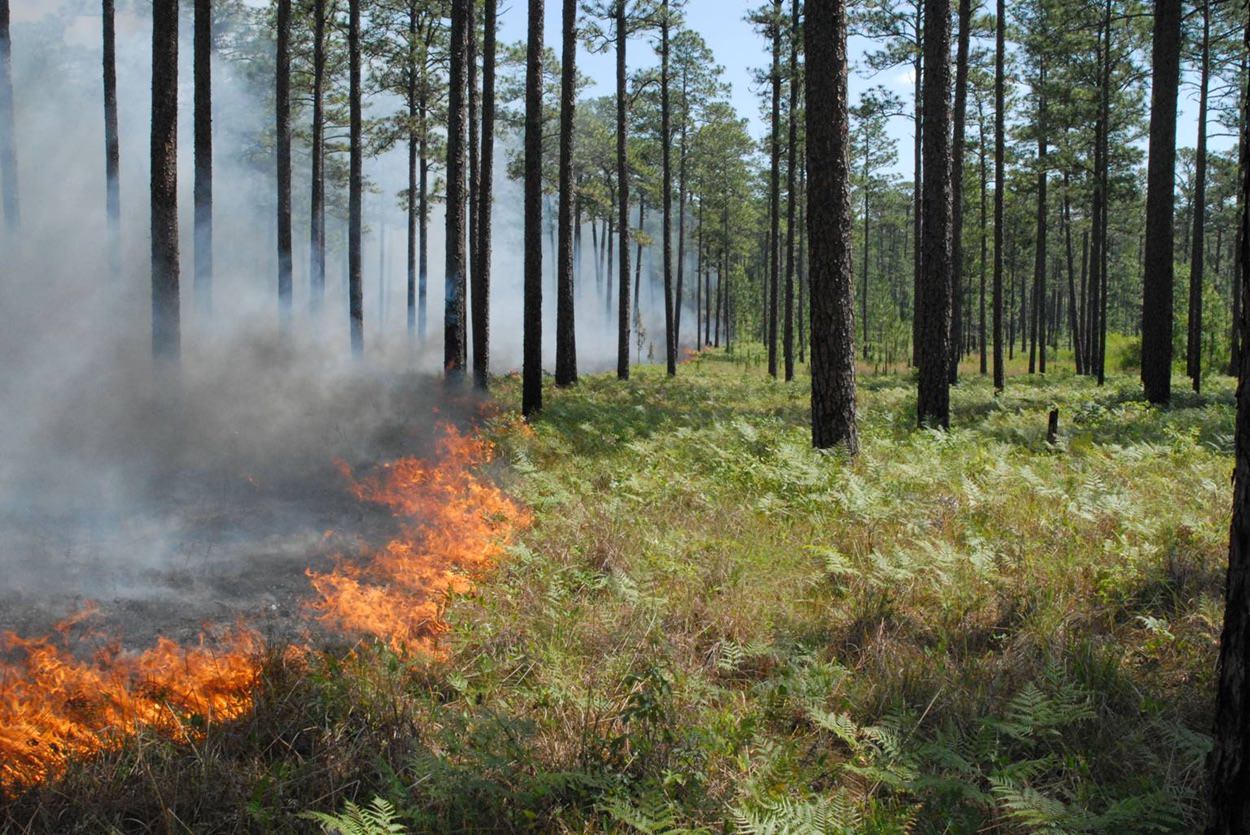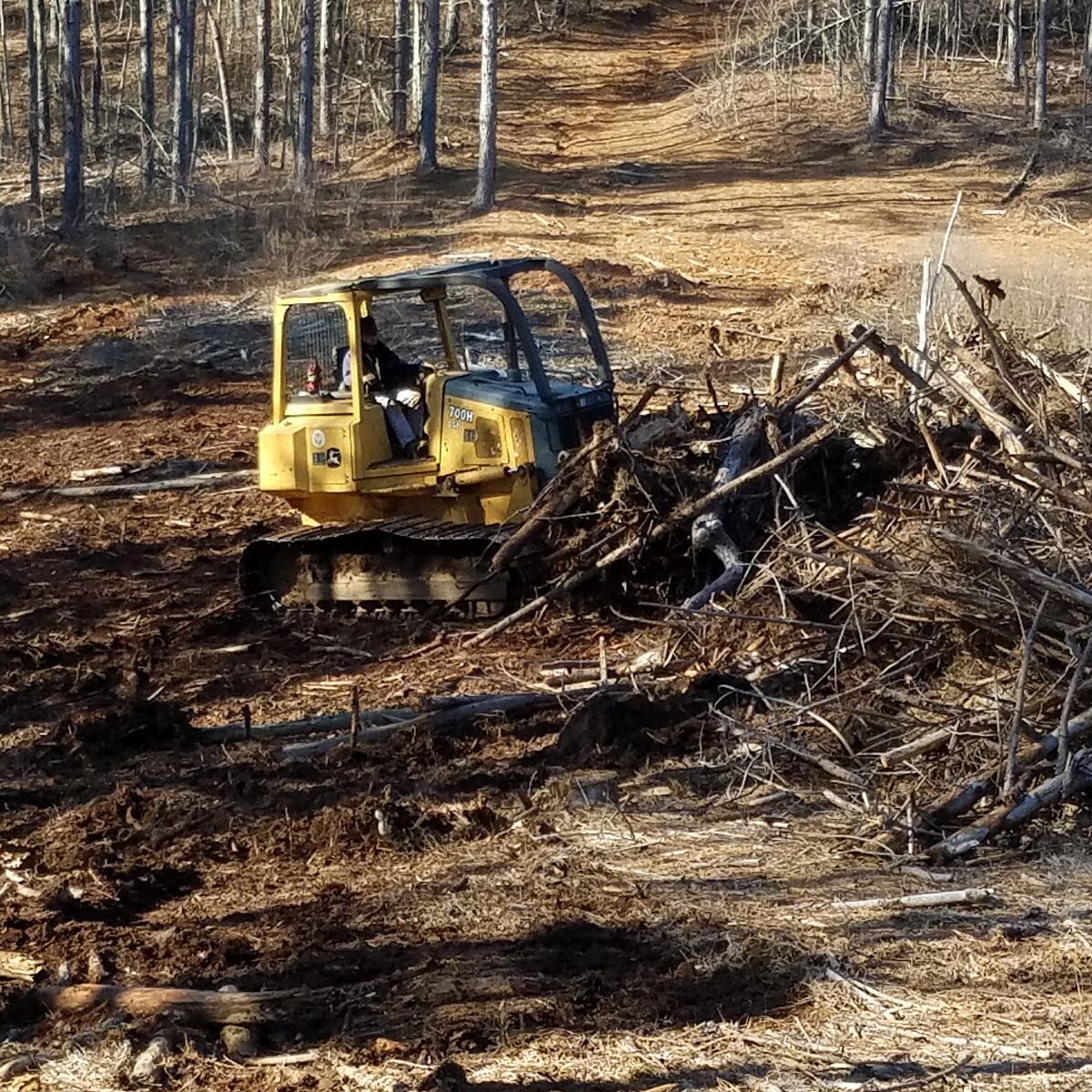Eastern Spadefoot Toad
Scaphiopus holbrookii
Status: Secure
The Eastern Spadefoot Toad is about 1 to 3 inches in length with dark to olive colored smooth skin. Although their skin is smoother and moister than most toads, they still have tiny warts on the body. They look different from most toads by their bright yellow eyes with a horizontal pupil and a dark spade (pointed area used for digging) on each of their hind feet.


Habitat & Range
E. spadefoot toads prefer to be in habitats like grasslands, flatwoods, farmland, and other dry habitats that have loose soils. They need loose soils to help make digging their burrows easier. These toads are found across the eastern parts of the U.S. as far north as Massachusetts all the way south to Florida.
Food Web & Energy Flow
The eastern spadefoot toad is nocturnal and only comes out from their burrows for feeding and breeding. When leaving their burrows to feed, they are opportunistic hunters and can eat a variety of insects such as termites and worms. They are carnivores and considered primary consumers.
Relationship to Fire
E. spadefoot toads depend on fires to maintain their environments. Since they live mostly underground, it is difficult for them to dig burrows when the soil is too packed. When fires occur, more nutrients are added to the soil and the soil can loosen up. The fires also promote the growth of grass and with increased groundcover, there is also an increase in prey for the spadefoot toads.

Conservation Status
The overall conservation status for E. Spadefoot toads are Secure. Although their population is not currently under any major threats, they are still experiencing habitat loss.

Human Impacts/ Threats

Fire Suppression
Many people think of fires in the forest as bad, so they work hard to prevent or suppress them. But longleaf forests NEED regular fire to support habitat for the species that live there!

Land Use Conversion
Longleaf forests and the habitat it supports is being cleared or converted to use the land for other uses like houses, roads, agriculture, and even to grow different types of trees to sell.
Resources
Savannah River Ecology Laboratory. Herpetology Program
Connecticut DEEP. Eastern Spadefoot
Animal Diversity Web. Eastern Spadefoot
